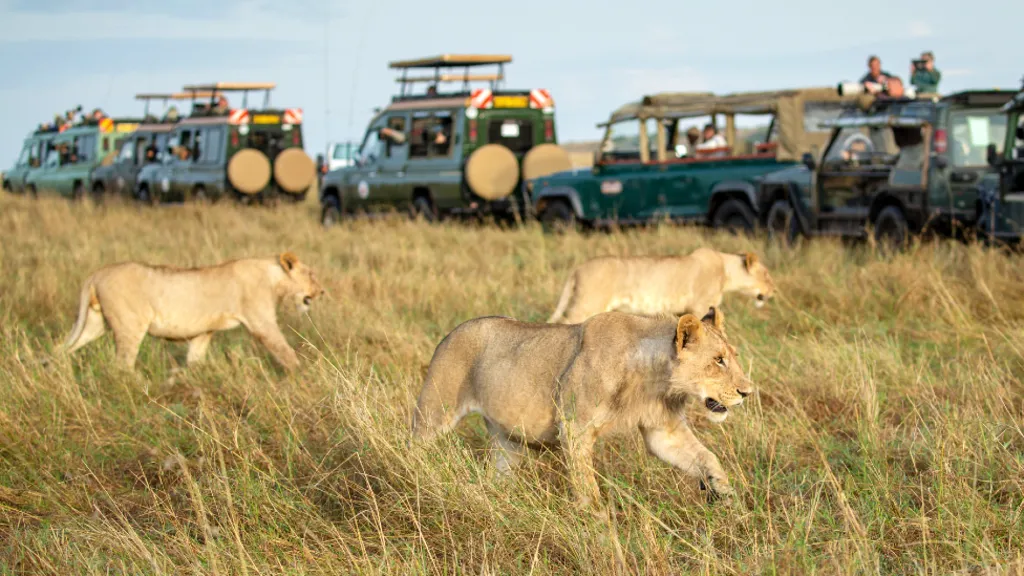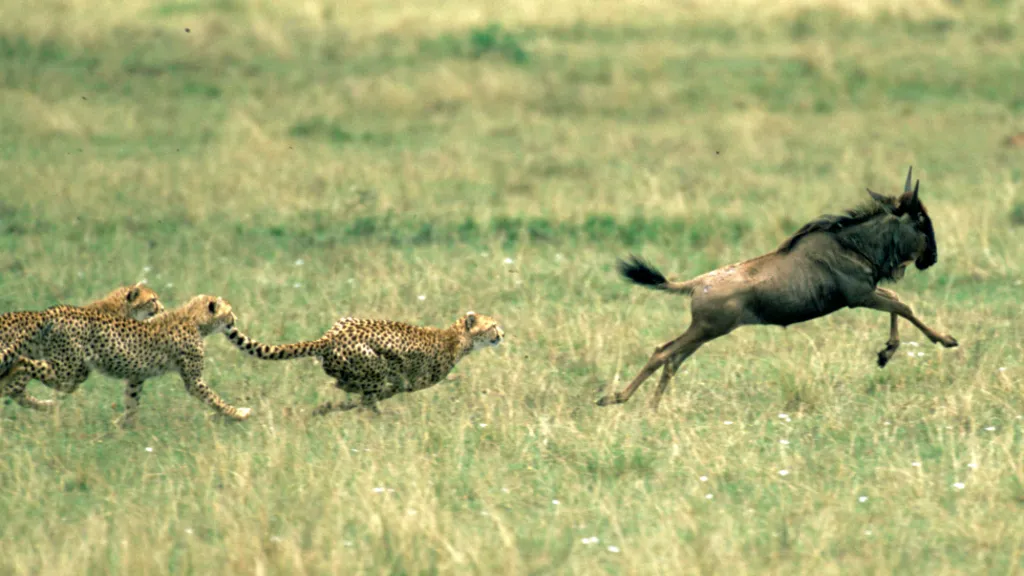Kenyan wildlife stress
An early morning in Kenya’s Maasai Mara game reserve – with wildebeest quietly grazing, birds crowding on the branches of a lone acacia tree and some zebras meandering nearby – is suddenly interrupted by an incoming radio call. Our tour guide driving a four-wheel drive speeds off across the plains after being told the famous “four brothers” are on the prowl. These male cheetahs are known to work together with deadly efficiency – although, with so many wildebeest in the vicinity, it is hard to imagine breakfast will present much of a challenge. Ours isn’t the only four-wheel drive racing across the dry grass to witness the imminent kill. No fewer than 27 other vehicles are encircling the herd of zebra and wildebeest waiting for the show.
When the four cats finally spring on their hapless prey and bring one young wildebeest to the ground, about half the cars pull up around them to watch. Each car carries a group of tourists, cameras in hand, filming the cheetahs’ jaws. The harsh brutality of the animal kingdom played out on the African savannah. Few would say they came to see swarms of other tourists, charging off to the next sighting, or that they enjoyed the backdrop of parked Land Rovers in their best shots; but for many that is what a trip to the Mara has become. A group of visitors and their camp were banned from visiting the Mara indefinitely in July, after a video shared widely on social media showed a man filming a leopard cub at the open door of his car. The rules state vehicles must be at least 82ft away from cat species and drivers must not form a circle of cars around the animals, who need to be able to assess the environment for potential danger. There is also supposed to be a maximum of five vehicles at a sighting at any one time – but this is commonly ignored. Being caught breaking the rules can incur an on the spot fine, immediate removal from the Mara or a ban from future visits. But enforcing the rules in a 579-sq-mile park is not easy.
There is the problem of managing tourists’ expectations. The “Big Five” – lion, elephant, buffalo, rhinoceros and leopard; When they pay the money, most clients, if they didn’t see a lion or an elephant – the ‘Big Five’ – they assume they didn’t see anything.” Phoebe Mottram, a South Africa-based British conservationist who used to work as a safari guide, says she prefers photography. Guests want to see what they’re told they should see, and most guides survive off tips, because their salaries aren’t good enough.” “It comes down to marketing,” said Phoebe. “So the guide chases the Big Five, gets better tips and this creates a perpetuating cycle.” “We call that a Ferrari safari,” he says. “It’s South African slang for people who just go really quickly from the buffalo to the elephant to the rhino and then they go home and call that a great day.” Romina Facchi, who runs the website Exploring Africa, warns that if guides continue to put pressure on animals by overcrowding them, the animals may become harder to find.
Jovial Jungle Jargon
I was walking in the jungle and saw a lizard on his hind legs telling jokes.
I turn to the local tribesman and said “That Masai lizard is really funny.”
The tribesman replied “That’s not a Masai lizard…
He’s a stand up chameleon…”
Finally, after two weeks of fruitless tracking through the jungle one of our local Safari guides received word that tigers had been spotted just outside a neighboring village.
Personally, I’d been hoping for stripey ones, but beggars can’t be choosers.
Before going on a safari, my wife asked me, “Is it difficult to spot cheetahs?”
Me: No. I think they usually come that way.
Did I tell you my safari joke?
Never mind… it’s irrelephant.
September 18th Birthdays
1971 – Aisha Tyler, 1971 – Jade Pinkett Smith, 1981 – Jennifer Tisdale, 1978 – Kendra Lust
1976 – Jason Sudelkis, 1953 – Ben Carson, 1974 – James Marsden,1933 – Fred Willard




